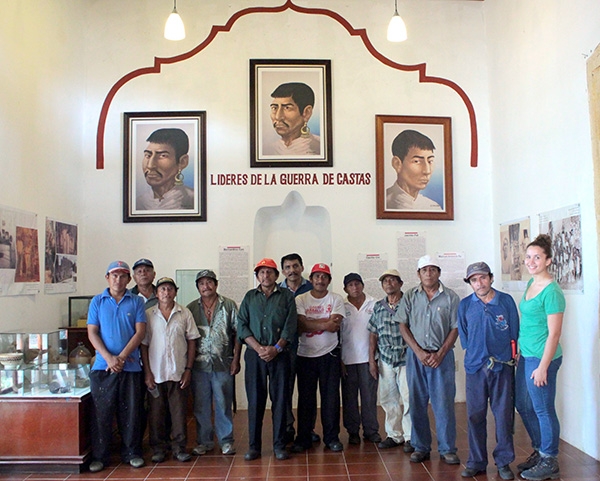What We Talk About When We Talk About “Community Archaeology”
Published: October 30, 2018
By: gracego

By Carlos Price-Sanchez, International Education and Development, Penn Graduate School of Education
Beginning this week, the Penn Cultural Heritage Center will embark on an online series discussing core topics in archaeology and anthropology. This series will explore the multitude of programs affiliated with the center, offering a glimpse into the lives and thoughts of those operating in the field. We will venture from Tihosuco, Mexico where a Maya community and archaeologists work side by side to study artifacts of the Caste War, to California where researchers and indigenous communities work together on land preservation, and to Sicily where members of the Marzamemi Maritime Heritage Project are collaboratively studying the underwater wreckage around the fishing village of Marzamemi. This week, however, we take a critical look at a favorite catch-all term, “Community Archaeology.”
At this point, a thoughtful reader might ask, “what do you mean when you say ‘community’?” This is always an important question to be asking, and one that has been passionately discussed among anthropologists and archaeologists for decades. While definitions are tricky, in this specific context, we refer to a self-identifying group whose cultures or descendants are most closely connected with a given heritage place, practice, or object. Determining the nuances of these factors is not always so easy. Thus, we will return to this question often throughout this series.
Much like the word “community”, evoking the concept of “community archaeology,” risks implementing a plastic phrase—a phrase that may be molded and attached to various different definitions until it becomes unclear, ubiquitous, and even cheap. What is community archaeology, really? In order to get to the heart of the idea, we must interrogate what archaeological practice has historically looked like.

The Caste War Museum, Tihosuco, Yucatan, Mexico.
Throughout its scholarly history, archaeology has been tied more so to artifacts and sites rather than to people; ignoring most troublingly, the people whose communities and cultures may be represented by the site. As described by Dr. Richard M. Leventhal, Director of the Penn Cultural Heritage Center:
“archaeologists would begin…by setting up a base camp either within or provisioned through a local community. This relationship was a straight-forward economic one whereby the community provided a service that was paid-for by the archaeologist and team. This was not a relationship that considered the heritage of the local community or gave them a research or cultural stake in the work.”
Conventional approaches rely upon highly hierarchical relationships whereby non-local archaeologists use power and money to determine what is culturally significant. These sites of archaeologist-determined cultural significance (and their objects) are then appropriated as the archaeologists’ own intellectual property and fodder. Such practices, though, sway dangerously close to reinforcing colonialist practices and belittling the contributions of non-professional communities. “Community Archaeology” actively works against this conventional model—sometimes with more success than other times. Archaeology defined from a community-based standpoint, then, is principally concerned with living communities and their heritage needs—not only the study of the dead, the universally human past, or societies long gone.
The beating heart of community archaeology is the local community! As Dr. Leventhal writes:
“it is the community which must identify the heritage to save and use for development. And it is the community that must make a series of decisions about the nature of that heritage, its prospective use for development, and their willingness to participate in these projects.”
The communities decide what is important, they decide what to do with their own heritage, and they are integral in every step of the process. The reality is that historical narratives, and the authority over who gets to tell those narratives, represents power in the present. In this way “good” archaeological practice is as much an effort to facilitate modern reclamations of power as it is one of intellectual discovery and two-way learning. It is as much about the present as it is about the past.

